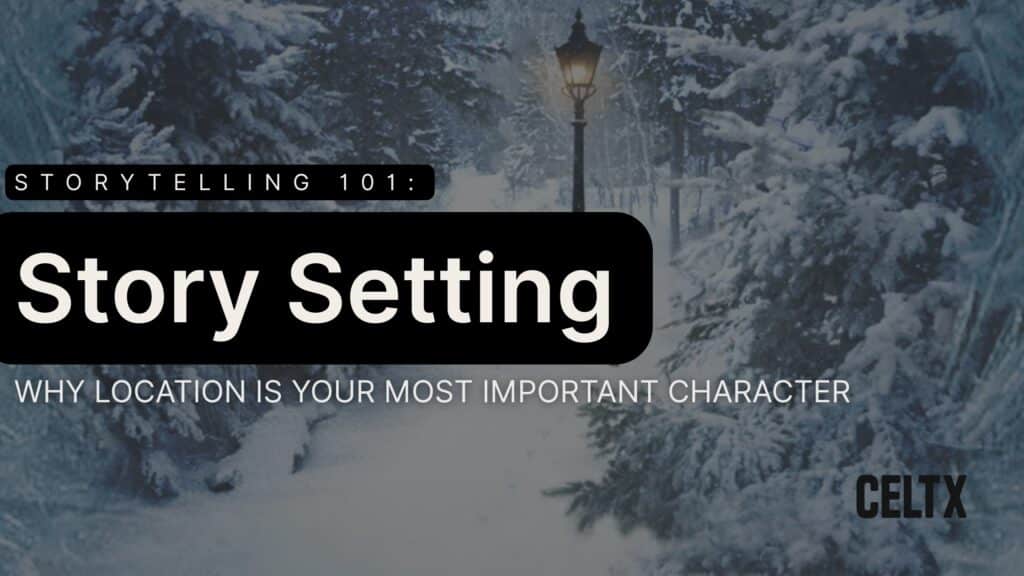
Every story has characters who laugh, cry, and clash. But what if we told you there was another force, working hard to shape everything from the first frame to the final fade-out. It’s almost a character in itself: the setting.
Your setting isn’t just the where of your story; it’s the why behind your characters’ choices, the how of their struggles, and sometimes, the who pulling their strings. From sun-baked deserts to cramped basements and sprawling metropolises, location is how your story breathes.
In today’s blog, we’ll explore why location is one of the most important aspects of your story, how to choose the right setting, and of course, how you can use your action lines to build atmosphere and mood.
So, before you start sculpting your protagonists or plotting your twists… start with the world.
Let’s get going…
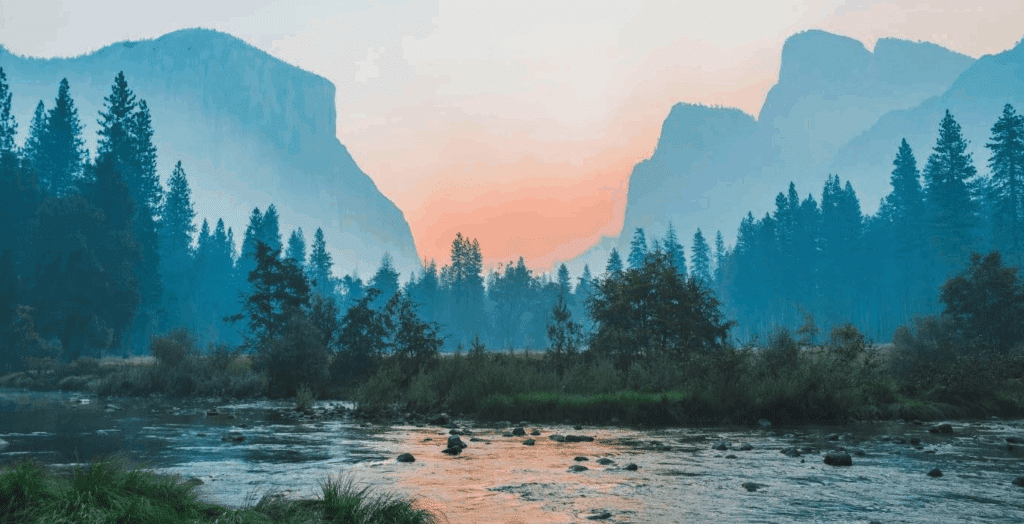
Table of Contents
- Defining Setting
- Setting as a Character
- Choosing Your Story’s Setting
- Thematic Examples
- Writing the Setting
- FAQs
- Conclusion
Defining Setting
Setting is the time and place where your story unfolds.
In screenwriting, our setting defines the tone and establishes the mood of our movies and TV shows. It informs costume, sound design, and the overall pacing. In other words, setting is the invisible engine driving our stories forward.
This is exactly the case in 2019’s Parasite. Bong Joon-ho used the Park family’s pristine modern home and the Kim family’s semi-basement apartment, not as backdrops, but as battlegrounds for the story’s themes of class, status, and survival.
When you start seeing your setting not as a static location but as a living participant in your story’s drama, you’ll find everything will click into place.
Now, it can also be very easy to fall into the trap of seeing your setting as a mere green screen or stage. Take The Dark Knight, where the streets of Gotham define Batman’s story. Or the Overlook Hotel in The Shining which becomes a psychological labyrinth. And in Dune, the scenery is its own living, breathing ecosystem that dictates the culture and power of its characters.
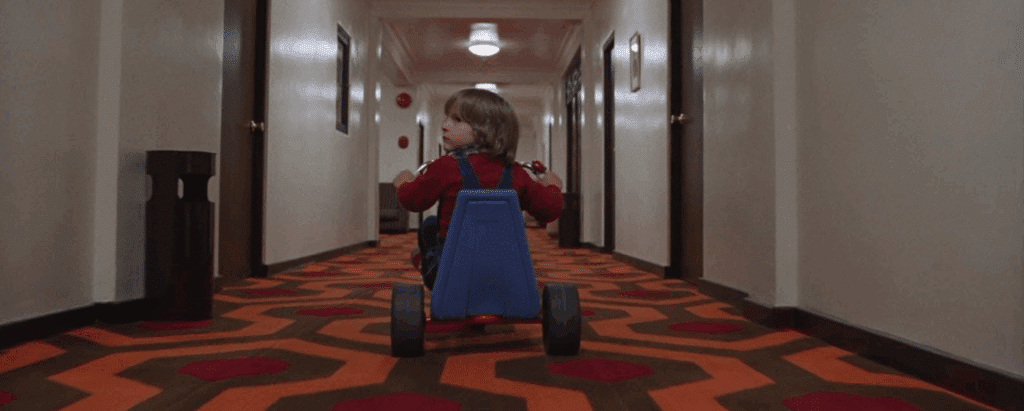
As you can see, setting can amplify three narrative elements:
- Conflict (for example, harsh environments can push characters to their limits)
- Theme (locations can echo or contrast your story’s central idea)
- Emotion (the texture of a setting, such as its light, sound, and architecture, can make us feel before we hear a single line of dialogue)
Setting as a Character
Okay, so it sounds a bit of a strange concept, right? Seeing your setting as its own character. Well, yes, but it makes sense. Let me explain…
1. Setting Imposes Rules
Every world has its boundaries, whether they’re social, physical, or moral. These ‘rules’ are what make your world believable and consistent.
In A Quiet Place, silence is survival. The rule of ‘don’t make a sound’ shapes every single moment of that movie. In The Hunger Games, the Capitol’s control over the arena dictates every choice Katniss makes.
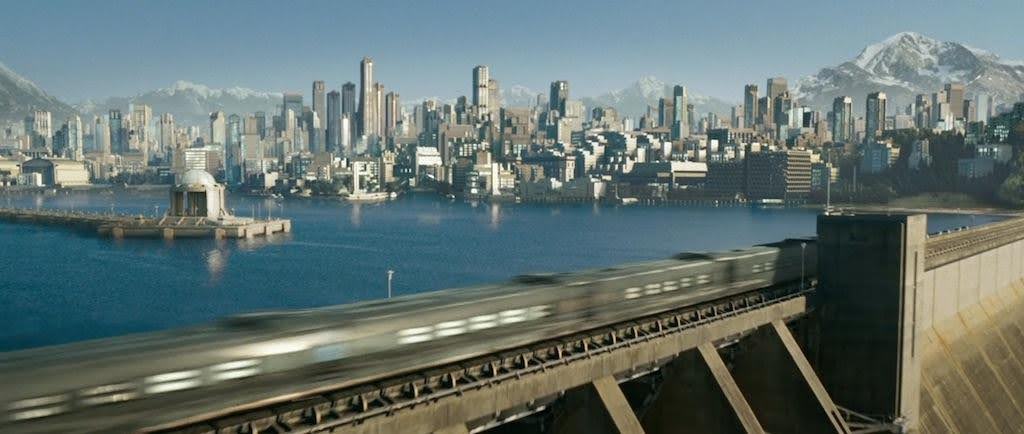
When your setting has rules, your characters are forced to respond to them. Suddenly, your environment isn’t passive anymore but is active storytelling.
2. Setting as an Antagonist
Sometimes the world itself is the villain.
For example, in The Revenant, nature is a relentless, unforgiving adversary to our protagonist. The same goes for Gravity, where space becomes both a playground and a predator.
By giving you setting teeth, you give your story tension that dialogue alone could never create.
3. Setting Reflects a Character’s Mind
Setting often mirrors a character’s inner states, like the neon-soaked, restless streets of Drive which reflect the Driver’s dual nature; he’s calm on the surface, but in chaos underneath.
Similarly, in Joker, Gotham’s decaying infrastructure mirrors Arthur Fleck’s mental unravelling.
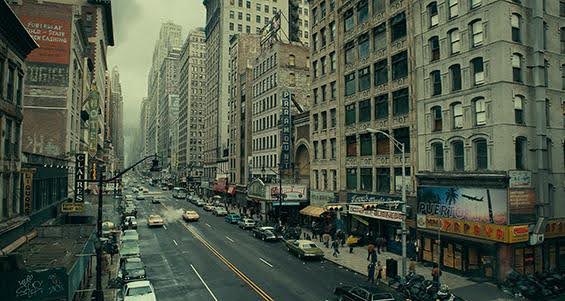
Choosing Your Story’s Setting
Now we’ve established what setting does, let’s talk about how to choose the right one for your story.
Firstly, your setting should serve your theme, genre, and budget. However, it should also inspire you and feel alive with story potential.
Here’s how to nail your setting first try:
Align Your Setting with Your Theme
Ask yourself this: What does my world say about my story’s core idea?
If your theme is about isolation, you might lean towards confined or desolate spaces. If it’s about ambition, an urban environment might reflect your character’s climb or fall from grace.
For example, Whiplash uses its jazz conservatory setting to turn a place of learning into a crucible of obsession. This setting is thematic fuel, enriching the story.

Let Genre Guide You
A romantic comedy might thrive in a cosy café, while a thriller demands dark alleys or remote cabins. And if you’re working across genres, contrast can be super powerful. Imagine a love story in a dystopian wasteland, or a horror film set in a sunlit suburban paradise.
Consider Your Budget
As we say time and time again on this blog, filmmaking is a business, and filmmakers know this all too well. Budget and setting are dance partners.
Luckily, creativity costs nothing. You don’t need an alien planet to create an unforgettable world. Take Clerks which was shot in a convenience store. Buried on the other hand, took place in a coffin.
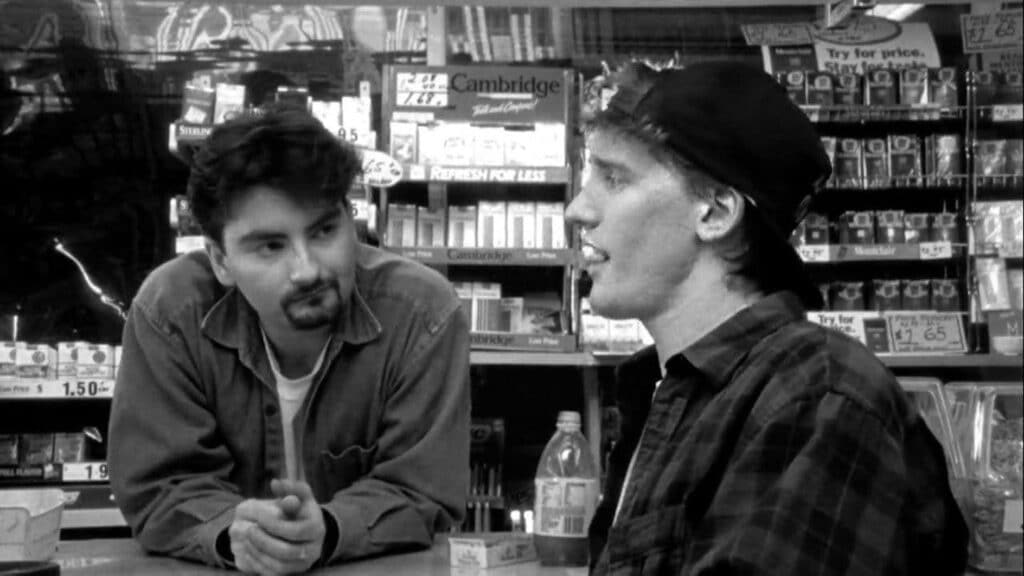
When you’re developing your script, tools like Celtx and our Beat Sheet and Outline View make it easy to track every location, rile, and environmental detail before you write a single word.
And of course, you’ll need to consider your budget when location scouting. Check out Yamdu’s awesome guide for that here.
Thematic Examples
As we’ve seen, contrast is storytelling gold. Opposing forces such as light and dark, vast and confined, and freedom and control are what make stories dynamic.
Let’s take a look at three classic types of settings that embody these contrasts:
Example A | The Claustrophobic Setting
Buried (2010), Panic Room (2002), 10 Cloverfield Lane (2016)
Claustrophobic settings strip away distractions and force character focus. The smaller the space, the bigger the tension.
In Buried, the entire film unfolds inside a coffin. Every scrape of dirt and gasp for air magnifies the panic. Similarly, Panic Room traps its characters in tight quarters, forcing them into primal survival mode.
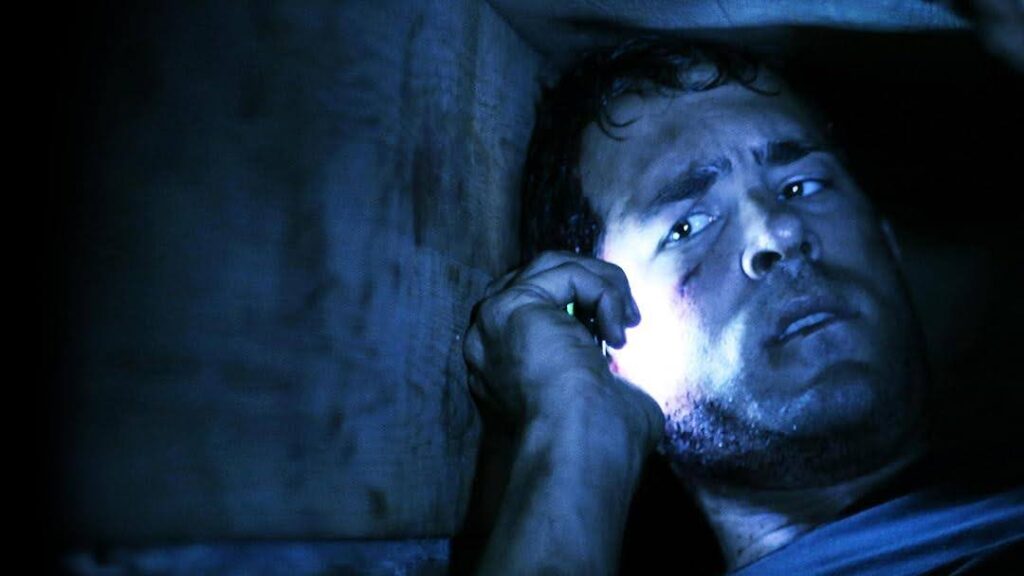
These films prove you don’t need an expansive world to make an impact. Claustrophobic settings like these are perfect if you’re looking to:
- Heighten psychological tension
- Force character-driven conflict
- Use sensory details like sound, light, and touch to build atmosphere
Example B | The Expansive, Isolating Setting
Mad Max: Fury Road (2015), There Will Be Blood (2007), Lawrence of Arabia (1962)
On the flip side, expansive settings like deserts, oceans, and tundras convey scale and solitude. The open horizon can be both liberating and terrifying.
This is definitely the case in Mad Max: Fury Road where the desert is a character unto itself: vast, brutal, and anarchic. In There Will Be Blood, the endless California plains reflect Daniel Plainview boundless and all-consuming ambition.
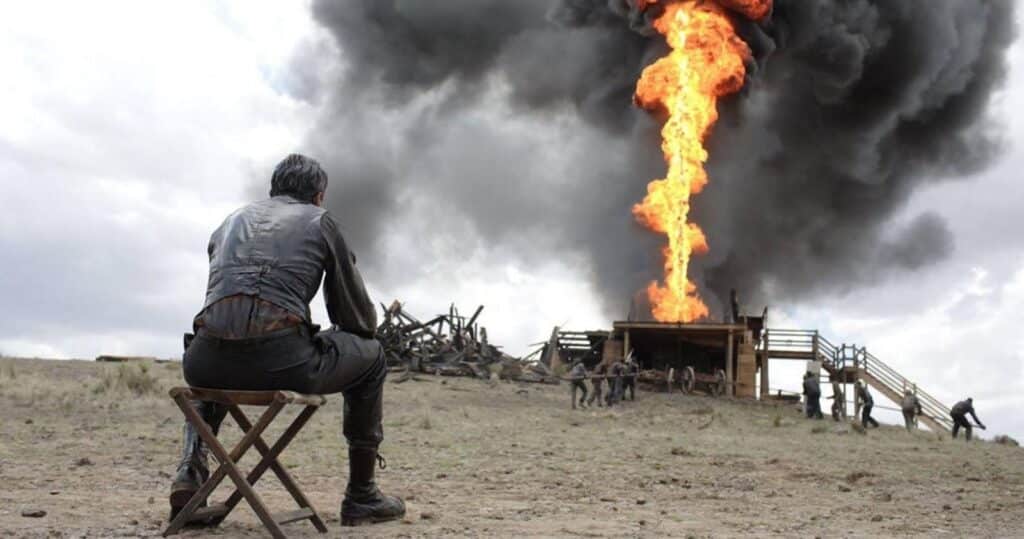
If you’re looking to:
- Reflect ambition and obsession
- Convey moral and emotional emptiness
- Make human frailty feel small against nature
Then this sort of setting would be perfect!
Example C | The Urban Jungle Setting
Taxi Driver (1976), The Social Network (2010), Collateral (2004)
Cities are alive. They breathe in smog and exhale chaos. The ‘urban jungle’ is less about physical danger and more about psychological overload.
Take Taxi Driver, set in New York which becomes an extension of Travis Bickle’s paranoia. In The Social Network, Harvard dorm rooms and Silicon Valley offices mirror the cutthroat pace of modern ambition.
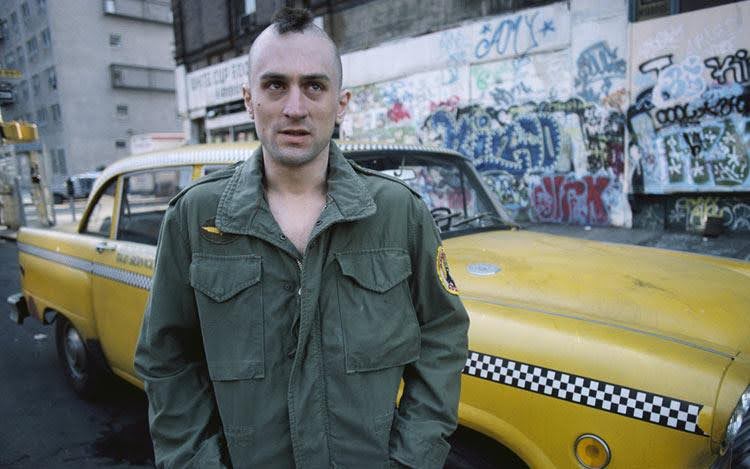
Urban settings thrive on the contrast of millions of people vs total isolation. They excel at:
- Mirroring social alienation
- Amplifying speed, noise, and sensory overload
- Making ambition feel both intoxicating and toxic
As you can see from all of these examples, how the setting looks and is portrayed plays a huge part in how its conveyed by the audience. Geoff Boyle and Nic Knowland break down Blade Runner’s use of setting within cinematography for Cooke Optics below:
Writing the Setting
Okay, so you’ve chosen your setting. Now comes the fun part… writing it!
But how do you make your setting leap off the page, especially when every line in a screenplay has to earn its keep? Here are four of our tip tips to do just that:
1. Use Action Lines with Intention
Action lines aren’t just instructions for the camera but are opportunities to set mood and tone.
Let’s start by comparing these two descriptions:
- The room is messy
- Empty takeout boxes crowd the table. A single light bulb hums.
It’s the same space, but a completely different feeling. As you can see by description B, good action lives evoke but don’t explain. They make us feel the place before we see it.
2. Choose Active Details
Instead of writing ‘it’s cold’, show us frost crusting in the window. And instead of saying ‘it’s loud’ let the blare of sirens bleed through your dialogue.
Every sensory detail you add to your script should anchor your audience inside your world.
3. Let Setting Shape Behavior
Show your characters interacting with the world. For example, if your protagonist lives in a cramped apartment, how do they move differently than someone in a mansion? If the streets are flooded, how does that change a character’s routine, or their mood?
Essentially, when you write setting through action, you’re writing character at the same time.
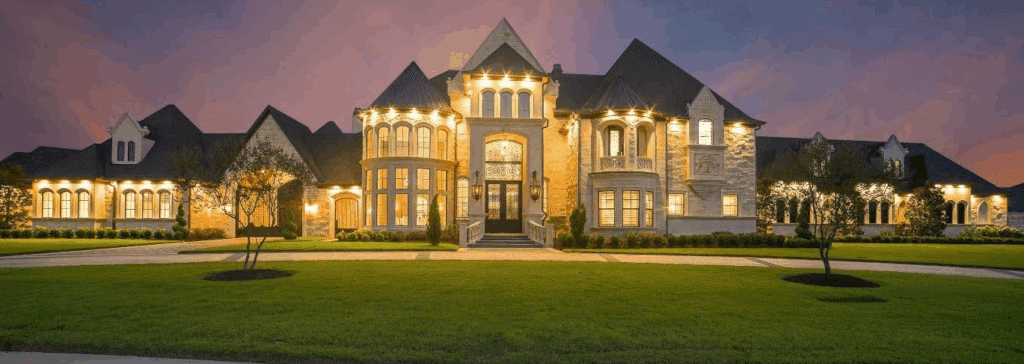
4. Build Atmosphere Through Rhythm
Sentence rhythm mirrors mood. Long, winding sentences suit sprawling deserts while short, clipped phrases match tight, tense scenes. The very pace of your action lines and dialogue can reflect your setting’s pulse.
The format itself becomes a key part of your storytelling.
If you want to dive further into worldbuilding, click here.
FAQs
“Location” is the literal place, such as a café, a planet, a courtroom. “Setting” is the full emotional and thematic context of that location.
Two stories could share the same café but have totally different settings if one feels romantic and the other oppressive.
The Overlook Hotel from The Shining. It’s the film’s central antagonist, feeding off isolation and madness.
Other examples include Gotham City in The Dark Knight and The Island in Lost.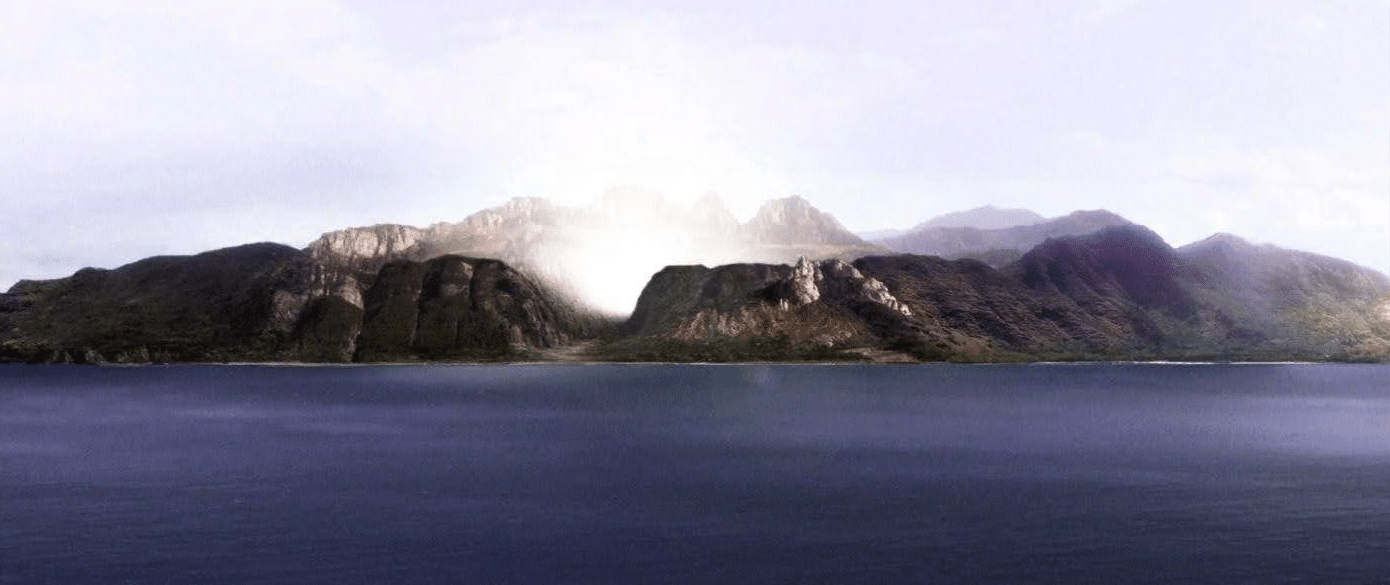
Often, yes, but only if it serves story and character.
A change in setting can symbolize transformation. Think of The Lord of the Rings, where every new landscape mirrors the heroes’ internal journey from innocence to corruption, and finally, to redemption.
Atmosphere is the emotional tone of your world. It’s the intangible mood that colors every scene. It’s the way the air feels before a word is spoken.
Writers build atmosphere through sensory detail, pacing, and rhythm. It’s what you suggest, rather than what you show.
Conclusion
Your setting is where your story happens and why it happens the way it does. It’s the silent narrator whispering subtext between the lines.
When you treat your setting as a character, with motives, moods, and movement, you elevate your story from functional to unforgettable.
From the vast exterior to the claustrophobic interior, Celtx makes your worldbuilding seamless. Plan every location, map every rule, and capture every ounce of atmosphere before you even start writing scenes.
Ready to define the world of your next script? Start for free today.
Up Next:
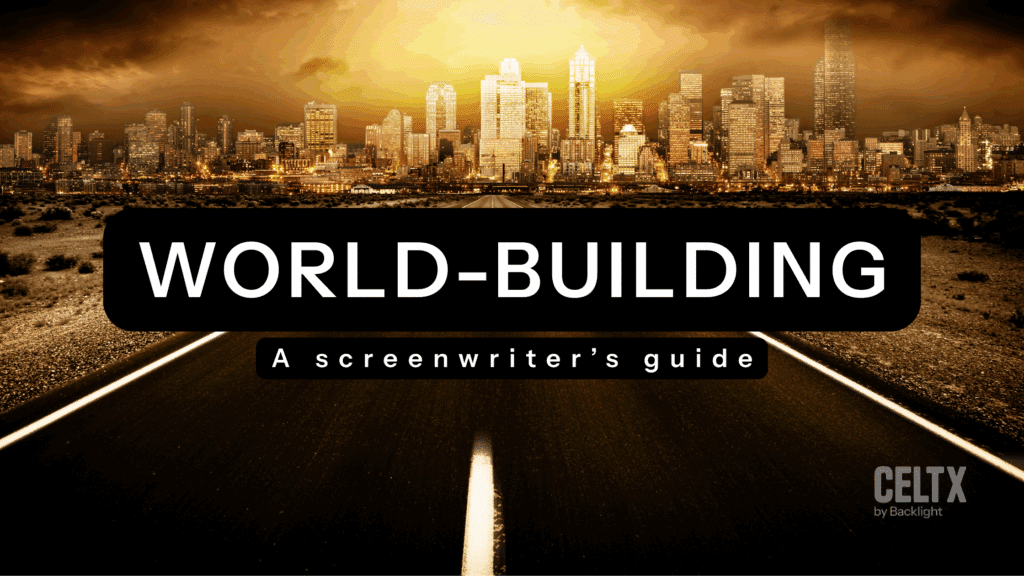
What is World-Building? | A Screenwriter’s Guide
Once you’ve defined your setting, take the next step: build a fully realized story world where your characters, plot, and themes come alive.
